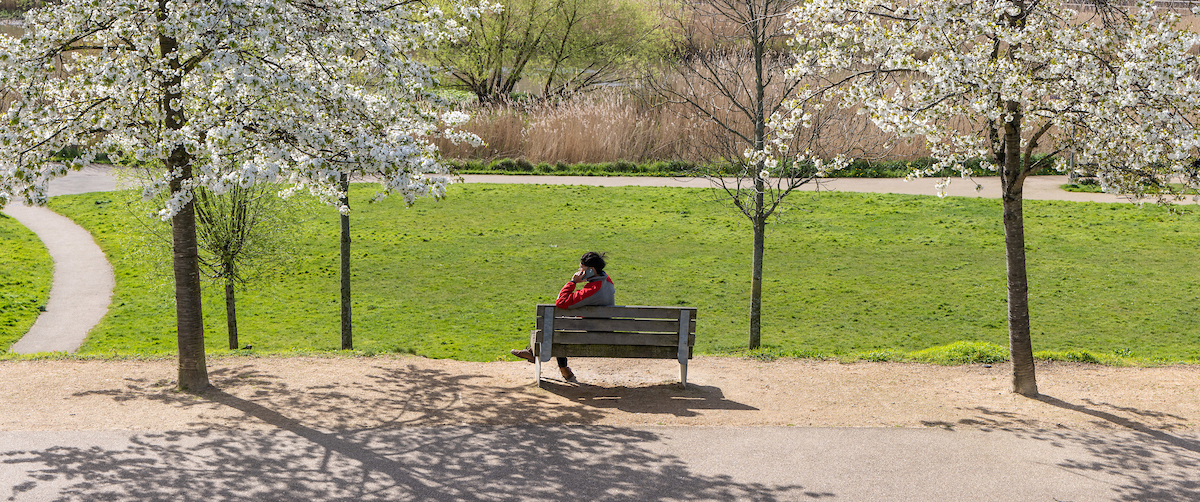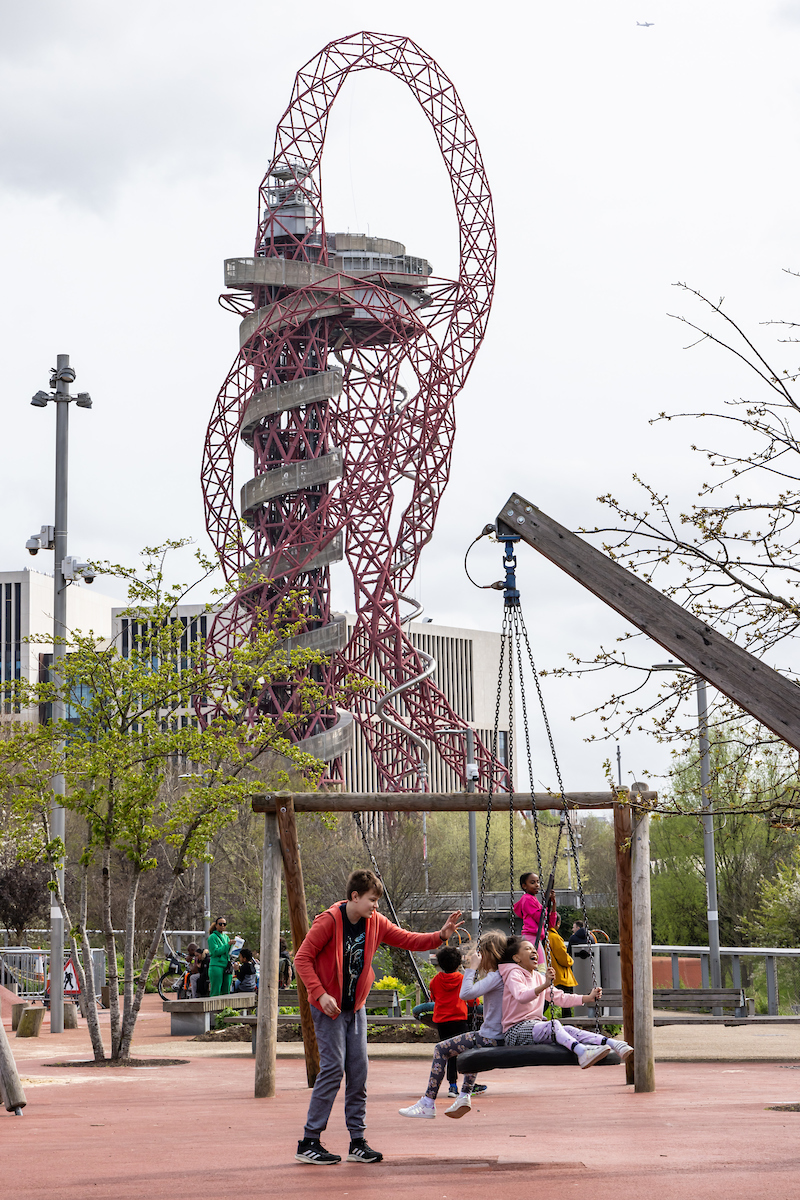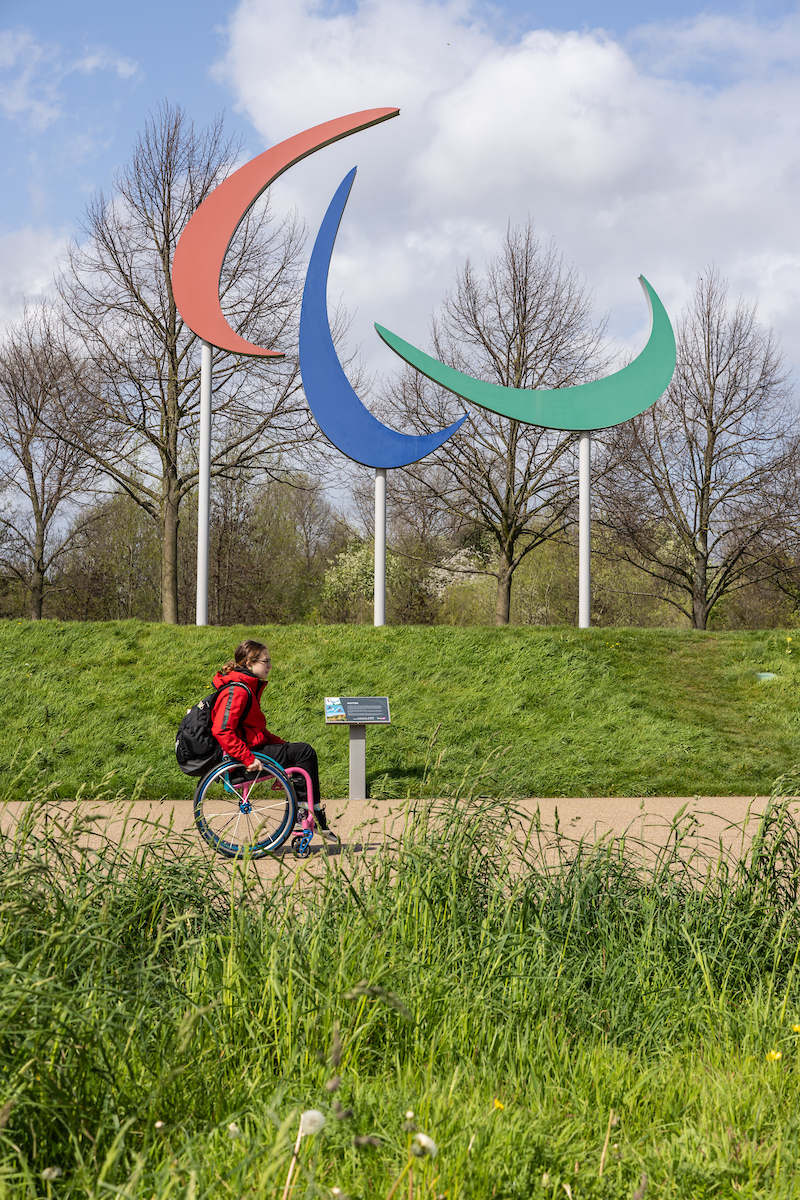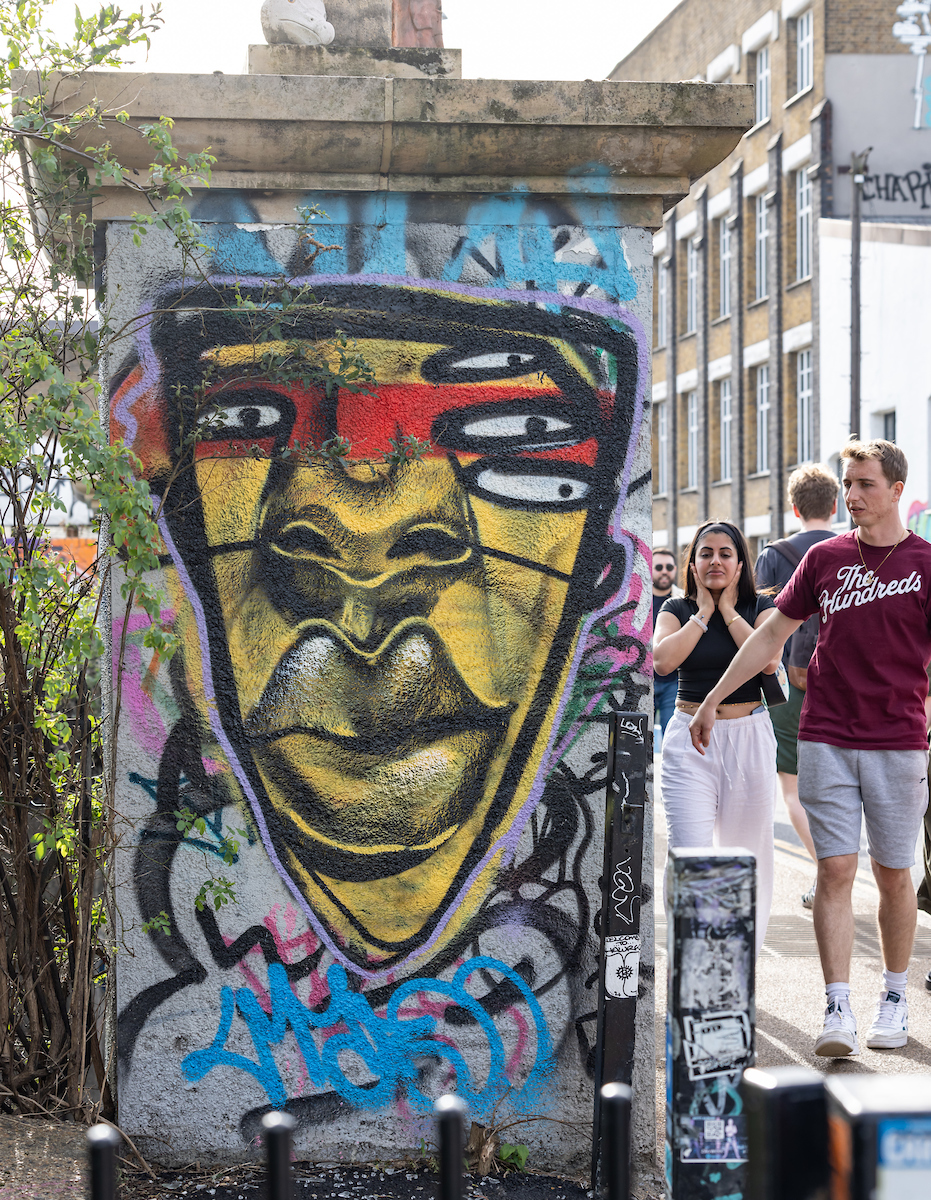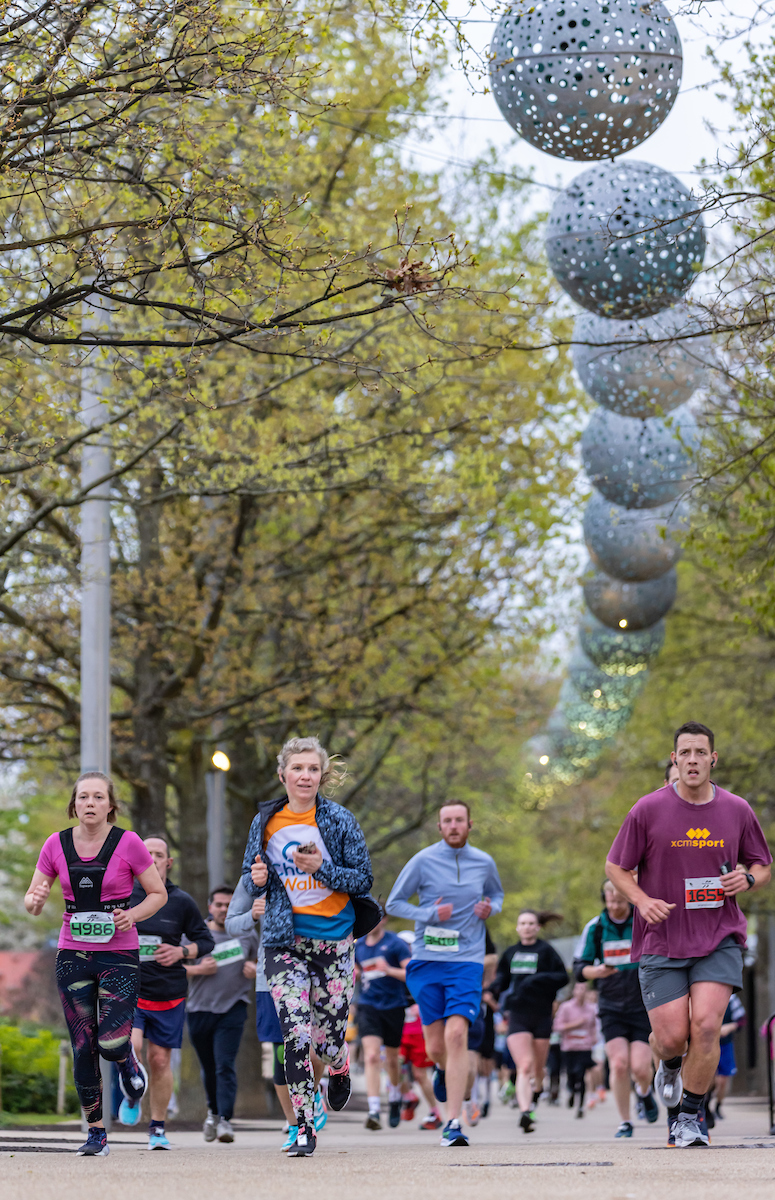Get updates from The Developer straight to your inbox Yes, please!
Placetest: Queen Elizabeth Olympic Park
Anthropologist Caroline Bennett speaks to locals with photography by John Sturrock

Caroline Bennett is a socio-cultural anthropologist, whose work addresses issues of conflict and violence.
Mega-events have "monumental ephemerality", according to archaeologist Rebecca Graf. Recent Olympic and Paralympic Games have, however, tried to move beyond the momentary to a lasting legacy. Indeed, the importance of legacy is written into the Olympic Charter. What that legacy means has varied through time but, since the 1960s Rome Olympics, event-led regeneration has been a central driving force for many such mega-events.
The overall plan for the London 2012 Olympic Park was to redevelop a large area of the Lower Lea Valley and make the area into "the new heart of east London", adopting spatial principles to create thriving neighbourhoods, connected to each other and stitched into pre-existing communities, mixing living, industry and leisure, and centred around the waterways in the valley.
The aim was not only to bring much-needed investment to the four deprived London boroughs - Hackney, Newham, Tower Hamlets and Waltham Forest - that the Olympic site straddled, but to completely transform the area as well. As such, the London Olympic bid positioned regeneration as its driving motivation, declaring that the Games would deliver prosperity to the East End and London as a whole.
"This project is about not only delivering great quality housing, of which there is much more to come, but creating a new part of the city that includes significant infrastructure, economic growth and health and wellbeing"
The vision, delivered by the London Legacy Development Corporation (LLDC) was to create a "total social legacy" and the park is broadly successful. At over 225 hectares, the Olympic area is vast, including green spaces, waterways, housing, leisure facilities and infrastructure projects. The East Village and Chobham Manor are residential areas, housing families and young professionals working for companies such as Google and Meta.
The East Bank is home to arts and cultural institutions including V&A East, Sadler’s Wells East and BBC Music studios. When workplaces started reopening after the Covid-19 lockdowns, the Care Quality Commission moved its offices to Stratford from its previous location in Old Street. HMRC and the Human Tissue Authority have offices there. Here East houses creative, technological and business incubators as well as long established firms. Universities, too, are moving in. Loughborough has a London campus within the Olympic Park, and there are new buildings for University College London’s UCL East campus and the UAL London College of Fashion.
The area retains some industry. It was once home to 280 businesses employing 5,000 people in various trades but, according to research by Professor Julia Davis, these were relocated before the Games, and many closed down. The site still has concrete and aggregate plants, owned and run by Network Rail. Although it is seeking planning to develop leisure and business facilities, it aims to keep the railhead running too. Workspaces, maker spaces and start-up incubators have been added to the park.
According to The Guardian, research by Dr Penny Bernstock reveals that the net gain is just 110 genuinely affordable homes
Over 12,000 homes have been built with the stated aim of 30 per cent being affordable housing. Yet social housing makes up less than 10 percent of the total homes – approximately 1,000 units have been delivered. These are small numbers given the early promise that 30,000 to 40,000 new homes would be built, much of it affordable and for key workers. And especially given that the Clays Lane estate, which had 450 low-cost tenancies, was emptied and demolished to make way for Olympic development.
According to The Guardian, research by Dr Penny Bernstock reveals that the net gain is just 110 genuinely affordable homes. Meanwhile, in the four boroughs there are nearly 75,000 households on the waiting list for council homes. Private rental and housing prices have increased and the "affordable" rental housing in the East Village has a minimum income threshold of £48,000 for a one-bed flat while shared ownership homes require an annual income of at least £60,000.
In response, an LLDC spokesperson says: "Our record on housing delivery compares well to any other regeneration scheme in the capital and beyond. All our housing is in line with national and regional policies for affordable housing provision, but like the rest of London there are real challenges about truly affordable social rent homes; Queen Elizabeth Olympic Park is no different. This project is about not only delivering great quality housing, of which there is much more to come, but creating a new part of the city that includes significant infrastructure, economic growth and health and wellbeing."
The LLDC has written that some 33,000 new homes will be built in the area by 2036, almost 35 per cent of them affordable. "That’s over 11,000 new affordable homes in a range of tenures"
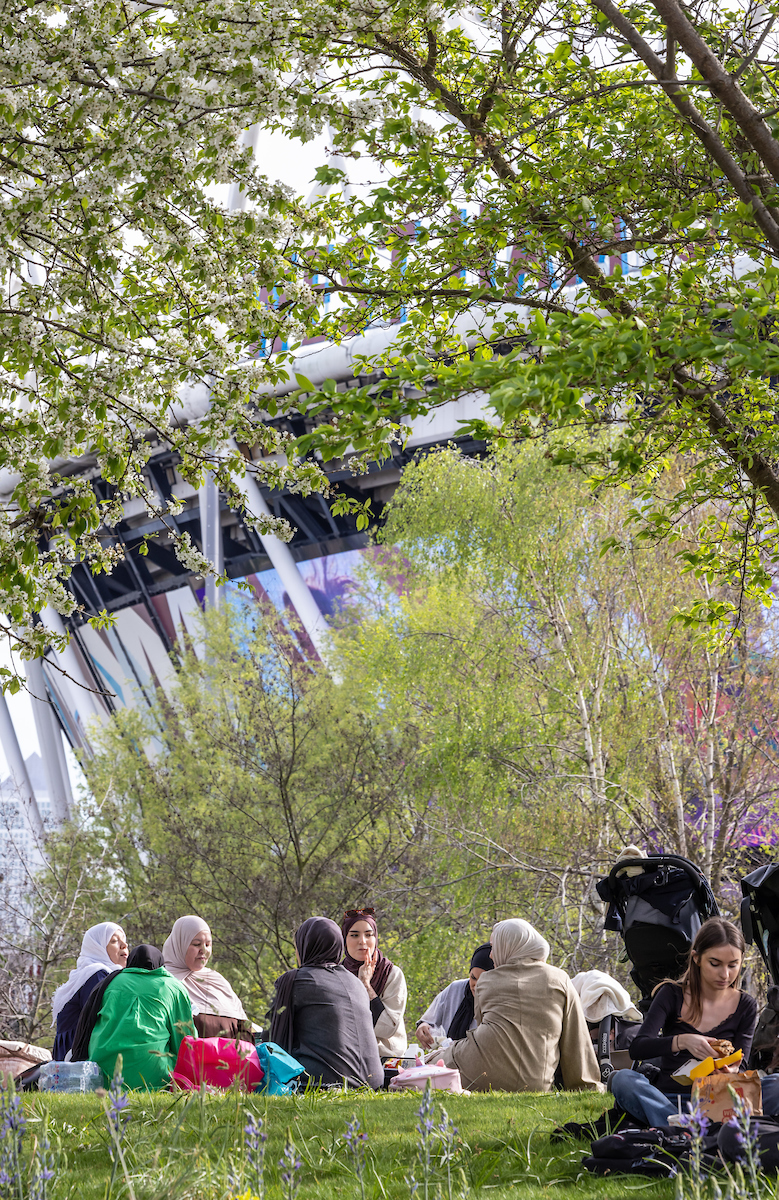
Developing the area
There was some development in the area prior to the Olympic bid, but the pace and scale accelerated for the Games. A bevvy of masterplans have directed the development, including one for the Games, an interim one from 2012-2014 overseeing the initial transformation from mega-event to public use, and subsequent masterplans for development since then.
To oversee the works, the LLDC was set up in 2012 as a London mayoral development corporation under the 2011 Localism Act (which aimed to devolve decision-making to local authorities) and was given town-planning powers. A local plan covers work done between 2020 and 2036. In almost all cases, planning submissions go to the LLDC rather than the borough. However, the LLDC planning policy and decisions team is expected to cease this function as planning authority from midnight on 30 November 2024 and return planning powers to the boroughs.
Making the area a "water city" was one of the five key spatial concepts of the initial design
Development is also subject to the convergence plans for growth set out before the Games by those four boroughs along with Greenwich and Barking and Dagenham, related to reducing wealth gaps, improving health and wellbeing, and creating "successful" neighbourhoods. Development within the area, therefore, is a multilayered and complex process that must address multiple objectives. Integral to the design and its connection to neighbouring areas are the green spaces, comprising a mix of gardens, meadows and wetlands.
The development centres on Queen Elizabeth Olympic Park – the first major new park created in London in over a century – with the green areas and waterways always positioned as central to the area’s layout and design. Making the area a "water city" was one of the five key spatial concepts of the initial design. As part of this, a 2.5km linear park was created above an abandoned embankment of one of London’s major sewers.
The River Lea and its tributaries in the area were decontaminated and more than 200 hectares of land were acquired. The park, led by the late landscape architect John Hopkins with Dr Phil Askew, was a mammoth undertaking. It involved moving 250 trees from where they were positioned for the Games, and planting 4,300 semi-mature trees, 127,000 shrubs, 1 million herbaceous plants, over 1 million bulbs and a 250,000m2 "species rich" meadow. The landscape masterplan was led by LDA Design and includes designs by Piet Oudolf, Nigel Dunnett, James Hitchmough, Sarah Price, LUC, Erect Architecture, VOGT Zurich, KLA and James Corner Field Operations, and others.
The result is an area of urban development with a mix of landscapes. While some areas are highly manicured, others have been created to attract wildlife or as slightly rugged green areas, many a little messy, which feel lived in and used.
"I would also suggest that talking with a park’s users will likely result in positive impressions, as those present have largely self-selected to be there, and are likely to find it appealing"
Research by Dr Bridget Snaith in 2015 found that the semi-wild aesthetic is one preferred by white, university-educated people and as such, the North Park was found to be less diverse than the South Park’s more curated design and manicured spaces: "Before the park opened in 2014, my research with local residents indicated that stylistic differences between the naturalistic North Park landscape, and the garden-like spaces of the South Park would attract different audiences to the two halves of the Park, with a likelihood of greater ethnic diversity in the South Park. User counts in the first months of opening found the North Park (nearer the Velodrome) attracted almost three times as many users likely to claim a white ethnicity than would be found in the surrounding neighbourhoods, whereas users in South Park appeared far more representative of the catchment demography," Snaith writes in an email response to this article.
"My finding that the park’s audience was not ethnically representative of the catchment population was based on visual cues. It was later upheld by face to face surveys commissioned by the Olympic Park’s managers where users were able to self identify.”
"I would also suggest that talking with a park’s users will likely result in positive impressions, as those present have largely self-selected to be there, and are likely to find it appealing," Snaith continues.
Indeed, among the people I spoke to, who crossed ethnicities and ages and comprised renters and home-owners, all expressed their appreciation of the green spaces.
To be able to walk for so long with little contact to roads and traffic, all the while in London, felt otherworldly
The green areas and waterways connect the park to its surroundings and beyond. One day, when the weather allowed, I walked from Queen Elizabeth Park through Hackney Marshes all the way up to Tottenham Hale, a walk of just over one and a half hours, only having to leave the parks and wetlands for the last few minutes. Another day, I walked west through Victoria Park and into Mile End, again mostly through parks and green areas. To be able to walk for so long with little contact to roads and traffic, all the while in London, felt otherworldly, as did the variety of environments encountered along the way.
The wetlands feel much older than their years, and the flora and fauna appear as if they have always been there. Albina, a product designer who has lived in the area for seven years, first as a student and then returning after moving away for a year, noted that to do this required extensive expertise in eco-system construction. "It’s really impressive the way they managed to get that feeling of being in the wilderness right outside the East Village,” she told me.
During the Covid lockdowns, this kept her grounded: "Every day I would walk around to see the ducks - that was my circle. I just needed the ducks. And I knew every duck. I saw them growing up. I saw them building their nests. They bring you peace every time you go there and you’re at the end of your patience with the world. "You have the big city and the incredibly modern East Village, and then you have that wildness in the park. I don’t know how they managed to do that but I love it.”
One aspect that contributes to this atmosphere is the limited traffic. Although there are some cars in the area, and of course delivery vans and bin lorries, much of the development is linked by waterways, bridges, walking and cycle paths. Cars are kept to the outer edges and, with bus and train stations at either end, the result is a relatively traffic-free area, which feels clean and breathable.
This island-like design has both positive and negative effects. In keeping vehicles to the outer roads, the area feels calm, safe and clean. It also, however, feels separate. The area is made up of several islands but is, itself, an island, separated from "old" Stratford by a bridge on one side and Hackney Wick on the other.
“It’s really impressive the way they managed to get that feeling of being in the wilderness right outside the East Village.... I don’t know how they managed to do that but I love it"
For Rina, who commutes to work at her organisation’s offices in the park, this separation creates a dislocation from "real life’’ and authentic neighbourhoods. She noticed this particularly in relation to food but also with the general ambience of the area. For others, it marks a separation of peoples. The East Village population, full of digital nomads and young professionals, varies vastly from the urban hipsters of Hackney Wick you meet on crossing the bridge, or the families in old Stratford on the opposite side.
Although the community is still developing, it is likely to retain this aspect, at least in the East Village where the majority of the 2,818 homes are build-to-rent. Build-to-rent is an expanding housing model in the UK. It sees renting as a longterm style of living, rather than an interim step between leaving your parents and buying your own place. Common in other parts of the world, it is a relatively new model in the UK, started here in the Olympic Park with the transformation of the Athletes’ Village into the East Village - a joint venture between Qatari Diar and Delancey, Triathlon Homes, First Base, East Thames Group and Southern Housing Group.
In aiming to attract and retain clients who seek the luxury of this model and can afford the prices, the housing companies have invested heavily in the area, not only architecturally but also at a community and environmental level. The majority of shops and eateries are independent and there are attempts to showcase the neighbourhood’s social as well as environmental sustainability, with investment in community sports as well as the building of schools, nurseries, doctors and dentists (although, as in most areas, people feel there are not enough).
The people I spoke to felt the developers were invested in the community as much as the buildings. ’’They want new customers,” said one. ’’The want to keep bringing people in, so they keep it clean, they keep it attractive, convenient and keep developing." They also want to keep it connected. Transport and infrastructure expansion were key, not only to the Games, but to regenerating the area, making it attractive to UK-based and foreign investors. With train, tube, DLR and bus connections, the transport links are excellent. Despite its name, plans to have the Eurostar stop at Stratford International never came to fruition so you can’t travel directly to Paris as once envisioned. But it does offer fast connections to Kent and London St Pancras.
Although the community is still developing, it is likely to retain this aspect, at least in the East Village where the majority of the 2,818 homes are build-to-rent
These connections - to the community, to the city, and to the wider world - were key to many people I spoke to, who voiced their appreciation of the area. When rail and tube strikes were grinding much of London to a halt, people near Stratford were fine. With so many options, there was always an available route to get home or to work. This has become a factor in why some choose to stay in the area. AB Reid, who moved down from Scotland, noted: "It definitely makes you more mobile. For example, you take a train for a few minutes to St Pancras and then you’re in Paris! It’s just so convenient. You can go to the coast really easily - in an hour you are in Margate."
Cosmopolitanism East London has always been an area of super-diversity and the Olympic Park area is no different. But the park’s connection to an international event is a draw for some. Those who have recently moved to the UK tell me this is an area where they have been made to feel welcome - unlike their experiences in other parts of the city. "It’s nice, if you’re not from the UK, to live in an international area,” one commented. AB such, as an international community is growing here and many of the people I spoke to felt they wanted to stay.
Pavel, a lawyer who moved to the area two years ago with his partner Elena, noted: "There’s Italians serving you Italian stuff, and you can speak Italian if you want to. Or if you want to have Chinese food, traditional and authentic, you can have Chinese food served by Chinese people. This is such an intercultural area, and they are trying to preserve that."
A site for international memorials
The international connections go beyond the population and its Olympic legacy. Steel company ArcelorMittal is very proud of the Orbit, which was completed in May 2012. Commissioned by then mayor of London Boris Johnson to be the Eiffel Tower of London, the red sculptural observation tower was designed by artist Anish Kapoor with engineer Cecil Balmond and the late architect Kathryn Findlay.
A twisting 178m-long slide by artist Carsten Holler was added in 2016 to boost ticket sales - the tower was supposed to make money as an attraction but is a source of growing debt due to interest on a loan from steel company owner Lakshmi Mittal. At 114.5m, the Orbit is the UK’s tallest sculpture and dominates the area. In discussing its design, Kapoor stated: "I wanted the sensation of instability, something that was continually in movement ... It is an object that cannot be perceived as having a singular image from any one perspective. You need to journey around the object and through it. Like a Tower of Babel, it requires real participation from the public.”
"It’s nice, if you’re not from the UK, to live in an international area,”
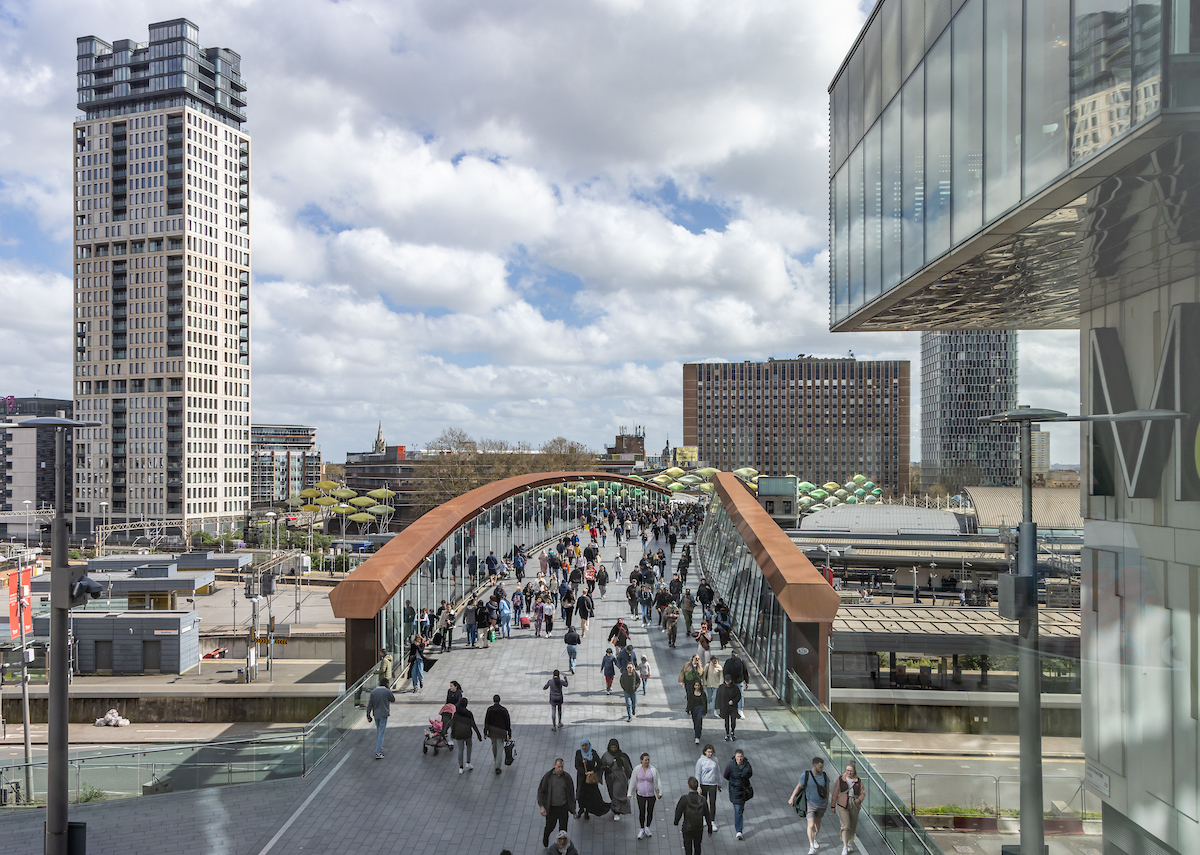
That participation comes in more forms than originally imagined. It was built from over 60 per cent reclaimed steel, and ArcelorMittal has said it includes materials from every continent where the company had operations. Mladen Jelaca, the chief executive of ArcelorMittal Prijedor, its mining operation in Bosnia, reportedly revealed in conversation that the Orbit includes iron ore from a mine in Omarska. During the Balkans wars in the 1990s, this mine was used as a concentration camp for at least 3,334 people, with hundreds found in mass graves at the site and thousands missing.
When ArcelorMittal took over Omarska in 2004, mass graves were still being excavated in the area. Despite a commitment from the company in 2005 to finance and build a memorial at the mine, by the time the Olympics came around, none had been created. In 2012, survivors of the Omarska concentration camp declared that the ArcelorMittal Orbit in the Olympic Park should be claimed as "The Omarska Memorial in Exile" to those killed at the camp.
In an article for Open Democracy, Susan Schuppli writes: "Is the ArcelorMittal Orbit literally a material witness to a crime?"
The Orbit is not the only international memorial in the Olympic Park. Originally planned for a site near the old City Hall by Tower Bridge until local residents objected, and in search of a home since being moved from Battersea Park, the sculpture SINCE 9/11, was installed close to the Aquatics Centre in 2015.
Created by artist Miya Ando and donated to London by the Port Authority of New York and New Jersey, the sculpture is made of steel remnants of the World Trade Center and is one of only six remnants of the towers sent overseas. The sculpture is considered hard to find, being located in an obscure corner of the park, between a car park and Carpenters Road in a grove of trees at the rear of the swimming pool. An inscription on a plaque headed "Why at Queen Elizabeth Olympic Park?" explains that the 2012 Games were "a powerful symbol of hope, peace and tolerance - the same values represented by SINCE 9/11.
Today the park receives visitors from all over the world and is situated in the heart of London’s most diverse and dynamic communities, making it the artwork’s natural home." The London Remembers website, which documents all of the capital’s memorials, claims some British relatives of those who died in the attacks have ’·expressed dislike of the monument."
Design
The futuristic and somewhat Brutalist architecture of the East Village, as well as the eclectic mix of building styles across the development in general, prompts various associations to other places. For one Russian couple I interviewed, part of the initial attraction to the area was that it reminded them of where they used to live in Moscow - so eerily similar in fact that they believe the town architects in Moscow had been influenced and inspired by the park and surroundings after visiting the area during the 2012 Games.
The East Village reminded me of UK social housing which, while looking rather austere, was designed around family and community – tall blocks of flats looking inwards to paved areas where children could gather and play. This was noted by Jonathan, who moved to the area from Canterbury several years ago: "The open spaces are wide, so you can actually see things" he told me. "They’re connected and a little bit enclosed, so you could imagine the kids going out and [parents] thinking alright, we’ll keep an eye but we kind of know where you are.
The recent film All of Us Strangers was filmed in the East Village. In the film, the area is deserted, cold and sterile, and the two central protagonists seem to be only inhabitants of a brand new building
"We used to send our son with one of his mates and he would love being in the communal area. All of his other mates would come down and they would play together. I think that’s the architectural design. It has worked brilliantly because people do feel like it’s a safe environment and enjoy it."
Potential readings are vast. The recent film All of Us Strangers was filmed in the East Village, in the buildings in front of Victory Park. In the film, the area is deserted, cold and sterile, and the two central protagonists seem to be only inhabitants of a brand new building – all visual metaphors for the struggles, loneliness and emotions of the main character, Adam. The reality is vastly different. While not yet full, the buildings are well populated and the public areas teemed with people of all ages, genders and ethnicities whether I visited at night or by day.
I saw children out and about with their teachers, examining the wetlands, doing surveys on the streets, or enjoying the public areas and playgrounds. One evening, I attended a community event at UCL East. On leaving, in the dark, it was reassuring to be able to follow a lit path back to the station, where teenagers were hanging out, people were walking dogs, there were couples on dates, and others returning home or going out. Unlike many of London’s green areas, the Olympic Park can still be visited at night – a particular bonus for the women and queer people I interviewed. Saira compared it favourably to Camden, where she lived before moving here. "We were afraid of walking outside when it became darker," she said.
Unlike many of London’s green areas, the Olympic Park can still be visited at night
"I think it’s safer here." Another interviewee agreed: "You can walk with your dog or with your baby and it’s OK. That’s unusual for London." The fact that all the people I spoke with commented on feeling safe is interesting, given the high levels of crime reported around Stratford station and the fact that, in recent months, phone snatching has become a problem across the park.
On this, one interviewee, originally from South Africa commented: "I wouldn’t have expected it. You think you’re leaving that sort of life behind and it ends up being pretty much the same." While most of the crime recorded by the Metropolitan Police for the park in the last three years is related to robbery and theft, there are also incidences of violence and sexual offences. This has not led to a feeling of unease or insecurity. In fact, feeling safe in the area was one of the uniting themes of almost every person I spoke to.
The sporting legacy of The Olympic and Paralympic Games looms large
For some, safety was the driving force behind moving to the neighbourhood. Ben’s family, for example, moved into social housing in the development in 2013. They had lived elsewhere in London but applied to move to this area in path to help keep the children safe. Lighting at night, community connection fostered by sport, and the management of the area were mentioned as supporting feelings of safety. I felt safe too when I visited – a woman, alone, day or night.
The sporting legacy of The Olympic and Paralympic Games looms large, from the Olympic rings that stand in the Lower Lea Valley, to the names of the streets and green areas including places like Victory Park, Celebration Avenue, Medals Way and Champions Walk. Critical to this etching of Olympic memory is the continuing importance of sport to the park. Elite sport remains significant.
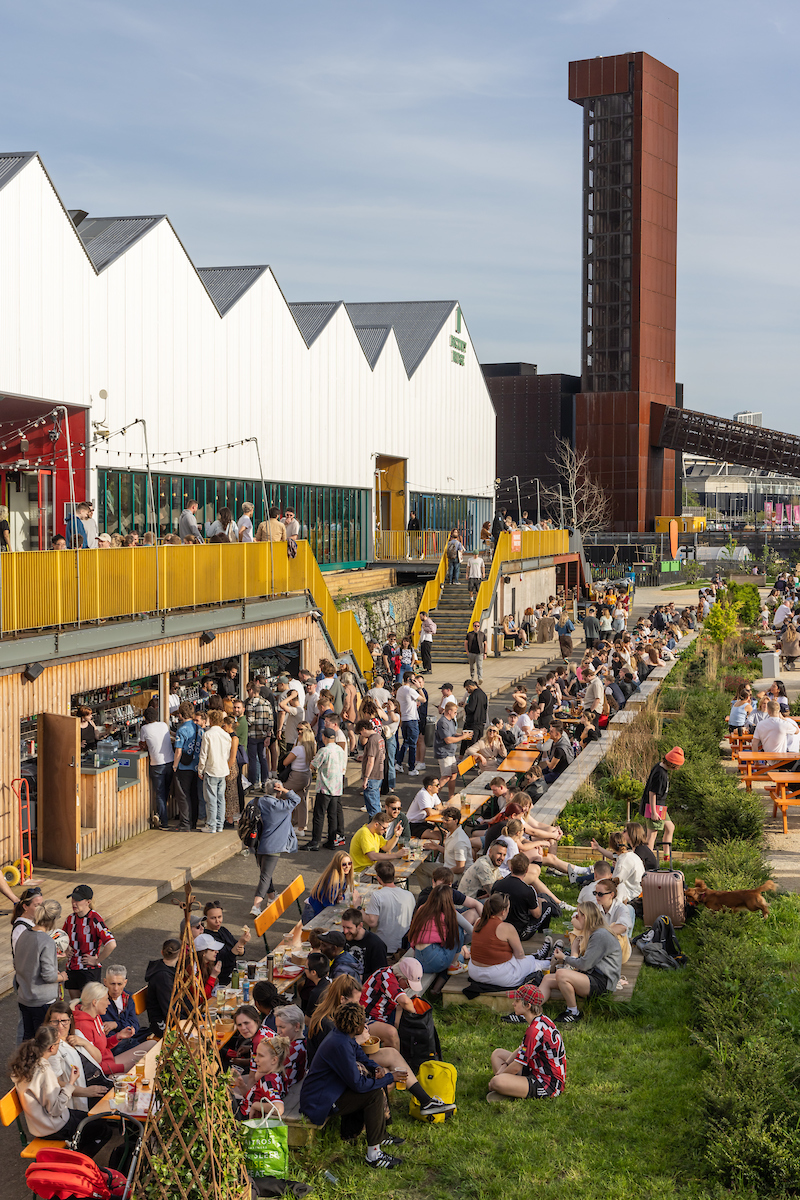
The Premier League football team West Ham moved into the London Stadium in 2016, while the London Lions men’s basketball team made the Copper Box Arena their base in 2013, the women’s team joining them in 2017. The arena has also hosted the Wheelchair Rugby League World Cup, the Invictus Games and more. The London Stadium, with a capacity of 60,000, has played host to the World Championship Athletics games and World Para Athletics Championships (the IAAF games), a Rugby World Cup and international baseball tournaments to name but a few. It also functions as a concert venue. The Aquatics Centre has hosted similarly prestigious events, including Sports Relief, the FINA Diving World Series, and a Super League Triathlon.
But it is not only elite sports that are critical. Access to the venues and sport in general has been key to drawing people to the park, ensuring the mixed use of the area, and community-based projects are run out of every venue and across the site. A commitment to keep sports affordable or free means that sport has not only attracted people to the site but created links across communities.
Having access to world-class facilities is attractive: As Dennis, who moved to the area for work, commented: "To have these facilities 10 minutes away from my home; I can’t move away from this luxury." One example of the way sport creates connections is the E20 Football Foundation and its associated teams. A thriving project with adult and child programming, a coaching academy and much more, E20 developed almost accidentally in the early stages of the development. Jonathan Silman, a former national athlete, moved to the area: "I thought, yeah, that would be the perfect area for my kids to grow up, as well as to be involved in myself."
Other parents asked if their children could play. Before long he was running several games a week, at which point Get Living approached him, offering support and sponsorship
Silman used to take his young children and their friends to play football at the weekends. Other parents asked if their children could play. Before long he was running several games a week, at which point Get Living approached him, offering support and sponsorship. The result was the foundation, which helps connect the area’s different communities and also has a future focused legacy, working with young people in the area to train them as players and coaches. Its participants have gone on to play for the likes of Arsenal, Leyton Orient and Charlton, while several of the coaching graduates now work with West Ham.
E20 stretches across the community, bringing together people regardless of income or background. One of the players commented: ’"They have something they can go to and it doesn’t need to cost you. You come on your bike and meet some mates for a couple of hours. Apart from this very important social thing, it’s also taking care of children who cannot afford to play football."
The foundation also feeds into the creation of a safer neighbourhood. As Silman told me: "The parents say they make friends. And if there’s a situation that ever needs to be resolved, they come to the football academy to resolve it. Even the schools sometimes." Other sports remain important. During the Covid lockdowns, residents took full advantage of the various facilities. The paddle courts were regularly booked out, there is a lively tennis club, and the parks and greenways provide space for walking and running without being on roads.
While vast crowds arrive to watch West Ham, the stadium’s transport options mean getting in and out is quick and easy. The residents I spoke to appreciate this. While buzzing, it never feels out of control
This transformation from the Olympics to community is an important part of making the area usable. Having grown up in Essex, I remember how exciting it was, when the park reopened, to be able to use the Aquatics Centre where we had watched Michael Phelps and Wu Minxia win medals and break records. That West Ham is now in the London Stadium is also exciting.
Steven, who lives in Essex, regularly brings his children to the games. They enjoy the venue because of its location - close to Westfield shopping centre and the park but also the Aquatics Centre. His 11-year-old daughter told me that she likes the excitement and the atmosphere while waiting for the game ("It’s like a community, all waiting for the same thing"), but also that it is close to the park and the water ("I like looking at that," she commented). While vast crowds arrive to watch West Ham, the stadium’s transport options mean getting in and out is quick and easy. The residents I spoke to appreciate this. While buzzing, it never feels out of control.
On the other side
The story of the park is not entirely sunny. A mega-event is always destructive as well as productive. Rapid development comes at the expense of those who already lived in the area. Although presented as a "wasteland" in dire need of regeneration and renewal, thousands worked and several hundred people lived on the Olympic site, and a community of gardeners thrived at the Manor Gardens Allotments.
While the area had been declining in wealth and prosperity in the decades before the bid – largely due to de-industrialisation – this ’"wasteland was still an area of industry and life. The biggest losers of the redevelopment, therefore, were those living and working in the area who were not allowed to remain. The rise in the cost of housing is a concern. The legacy plan for the Olympics was supposed to narrow inequality, building affordable housing and increasing the health and wellbeing of those living in east London.
Yet the fact that Newham was one of the worst affected boroughs for cases and death rate during the Covid pandemic, followed by Hackney and Tower Hamlets, is one reason researcher Dr Farjana Islam from The Urban Institute writes that minoritised ethnic communities in east London did not sufficiently benefit from the Games and "remain severely deprived in terms of health, housing and employment provision". Now, people who moved into the neighbourhood during the initial years are also being priced out of the area.
Although presented as a "wasteland" in dire need of regeneration and renewal, thousands worked and several hundred people lived on the Olympic site
One family told me the rent in their building had increased by 25 per cent in one year, making it unaffordable for some. New properties are advertised as spectacular and luxurious: Fortune magazine recently profiled a £17.5 million penthouse in Stratford as the most expensive property in east London.
The newest rental development to open is Coppermaker Square – a "premium rental" complex that comes complete with a private chef for hire. Victory Plaza’s two towers include no affordable homes. The lack of affordable housing is disappointing considering the initial aim to provide much-needed infrastructure, housing and regeneration to the four boroughs the park encompasses.
Among residents, there have been complaints about the maintenance charge which pays for the upkeep to the park, which does not receive funding from the boroughs. All commercial and residential occupiers on public land must pay the levy, but those on private land, including people living in the East Village, don’t – a problem highlighted in a 2023 review.
There is a rapid turnover of the population surrounding the park, and some feelings of disconnection between those living in social housing and privately owned dwellings to those in the built-to-rent properties
The Fixed Estate Charge costs in excess of £1,000 per year for those living in a three-bed flat in Chobham Manor, who are also charged a service fee for the development upkeep. The LLDC has said it is reviewing different approaches to the levy. With a high level of renters, there is a rapid turnover of the population surrounding the park, and some feelings of disconnection between those living in social housing and privately owned dwellings to those in the built-to-rent properties.
There is also ongoing controversy – and a legal battle – over the fire safety of the buildings and who is responsible for paying for the cladding replacement and improvements to the East Village. Although it has always formed part of the overall masterplan, the next phase of homebuilding will convert some of the green spaces into housing, which has led to feelings that the park is being eroded.
A place that’s always changing
Any urban place is one of constant change. In a mega-scale project like the Olympic Park, this is all the more the case. One evening in March, I attended a community event aiming to inform local residents and businesses of existing and upcoming developments. Representatives from the major players and providers were there: Pudding Mill, Network Rail, Coppermaker Square, to name just a few. Sitting next to them were local community organisations - the Good Growth Hub, a mobile garden, Creative Connect and many others.
While there will always be sticking points, the integration of community and business seemed to be working well in general. As Zoe Pollock, a student from the University of Georgia who undertook her MA research on the Olympic Park said: "When you talk about economic regeneration, people tend to think about maximising profit. But a lot of people were speaking of an economic regeneration which sparked sustainability." For Iona, who has lived here for coming on four years, change is a good thing: "This place is becoming more liveable for me."
Caroline Bennett is lecturer in social anthropology at the University of Sussex
If you love what we do, support us
Ask your organisation to become a member, buy tickets to our events or support us on Patreon
Sign up to our newsletter
Get updates from The Developer straight to your inbox
Thanks to our organisation members
© Festival of Place - Tweak Ltd., 124 City Road, London, EC1V 2NX. Tel: 020 3326 7238
© Festival of Place - Tweak Ltd., 124 City Road, London, EC1V 2NX. Tel: 020 3326 7238
